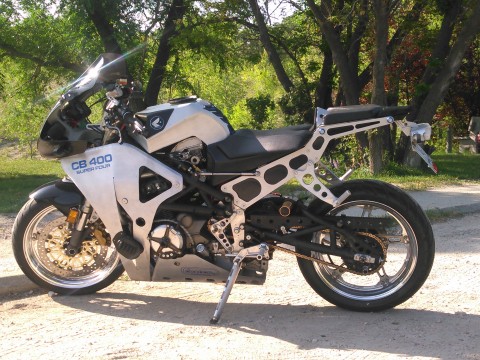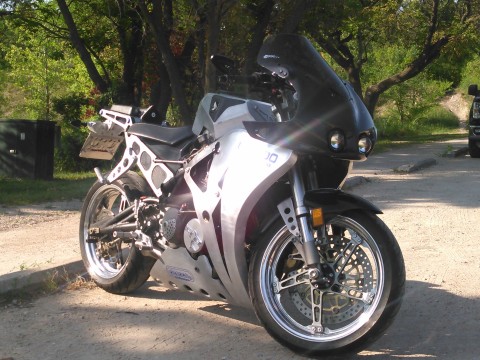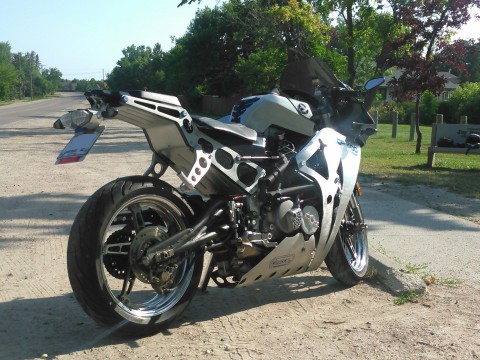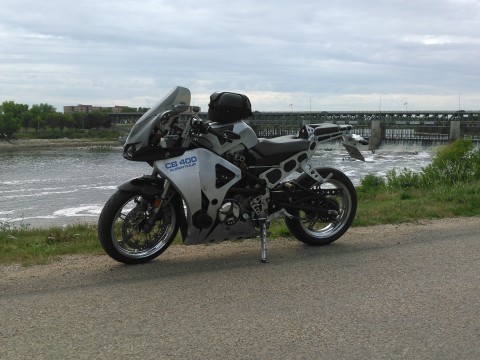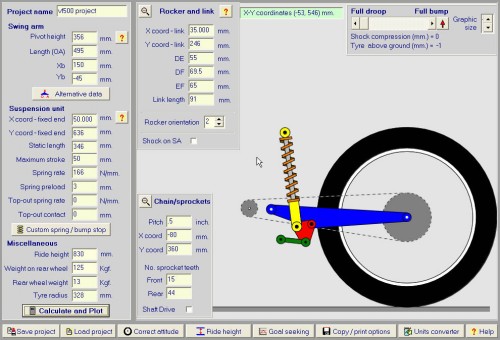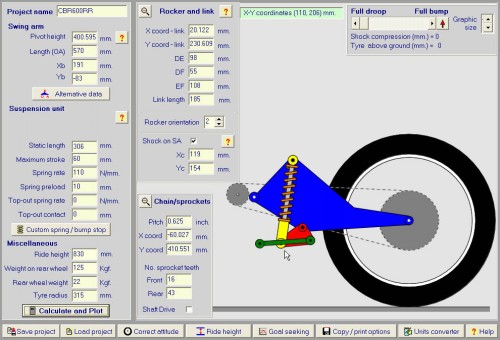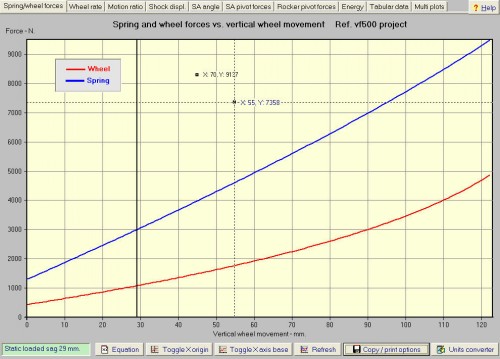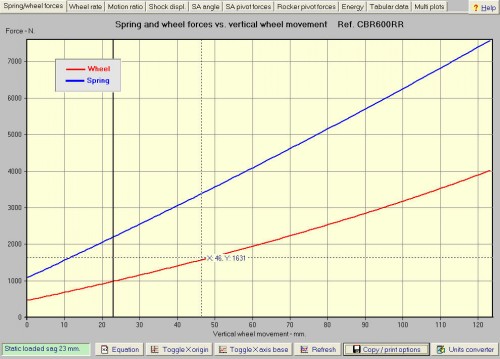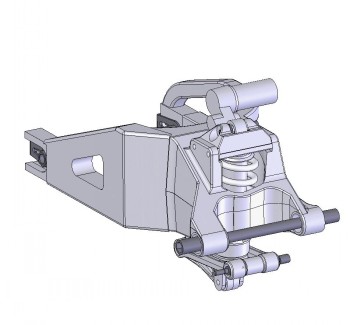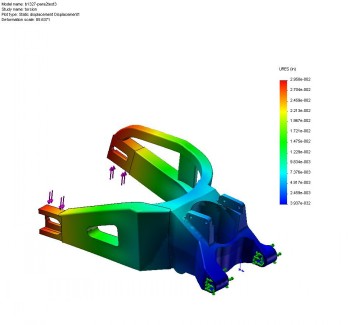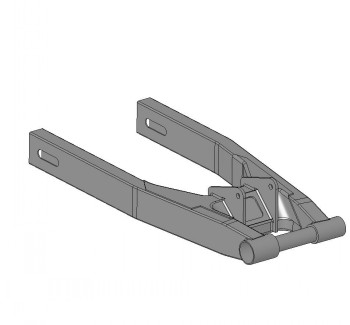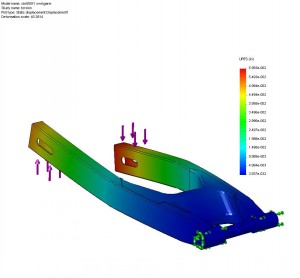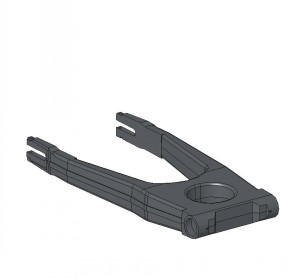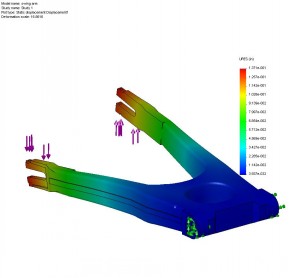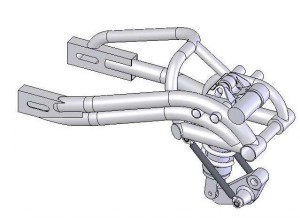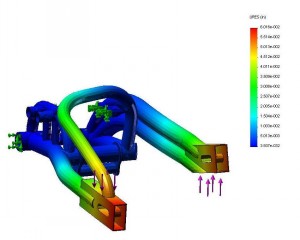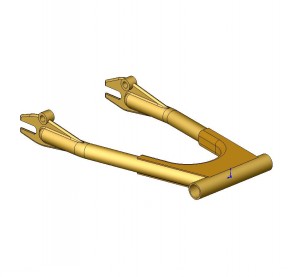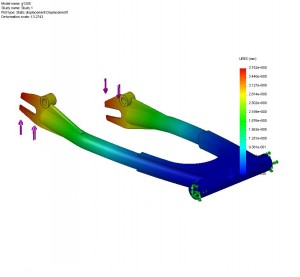 |
denoonsp - Home of the modified 400F | Advertise here. |
| HomeLinksSite Map |
| Projects |
| My CB400F |
| Turbo CB400F |
| Products |
| Services |
| Technical Info |
| Forums |
| Gallery |
Project Bimota CB400F
The basic frame layout is close to being finalized, and I am spending a lot of time right now getting the rear swingarm and suspension sorted. I have been using Tony Foale's Suspension Kinematics software, http://www.tonyfoale.com to analyze the rear suspension system. As a baseline I have the performance curves from a 2005 CBR600RR, and a VF500 Interceptor, and I have been modeling my new parts to mimic the suspension action of the CBR. But, there are many ways to physically build the parts and have them generate similar curves.
I have analyzed the design of swing-arms from a CBR600RR, a CBR600F1, and a VF500 to get an idea of how stiff Honda is making their swing-arms. It is interesting to see the progression in stiffness from 1983 (VF500) to 1990 (CBR600F1) to 2005 (CBR600RR) . I applied the same 400 lbs per side torsional load on the arms. April 16/2010 - I have added in a new gull wing swingarm that I designed fabricated out of 1.5" OD x .0625" wall and 1" OD x .0625" round tubing. Because this bike is more street/custom oriented vs. a race/track bike I will probably go with the gull wing design, even though I could have made it simpler and lighter, I like the look of it, and it is reasonably strong and light.
While researching CBR shock specs, I came accross a site that had a really nice write up on rebuilding a CBR600RR Showa shock. I received permission from the site owner to reproduce the write up on my site, because I didn't want to risk losing the information. Click CBR600RR Shock Rebuild to see the reproduced article, or http://www.peterverdonedesigns.com/600RRshock.htm to see the original article. Thanks to Peter Verdone for a great write-up.
I am slowly getting around to actually building parts for this bike. Detail Pics |
This website was powered by Ewisoft Website Builder.
